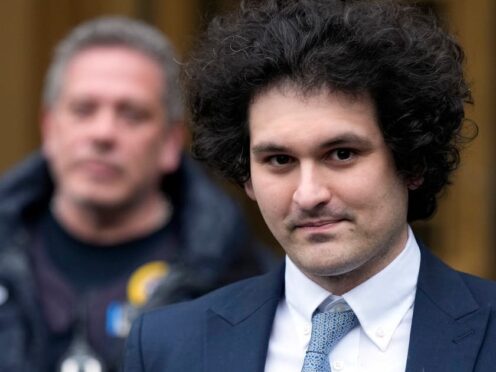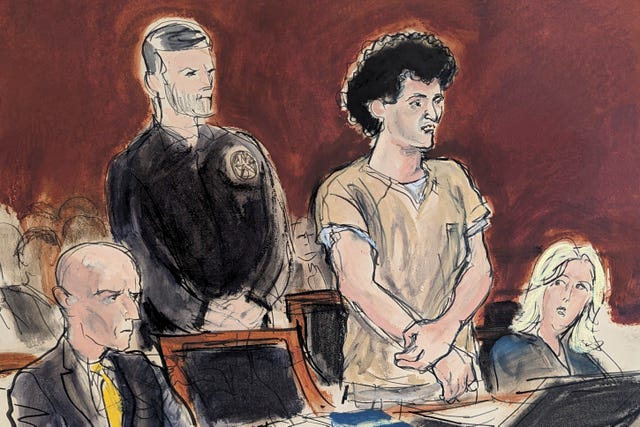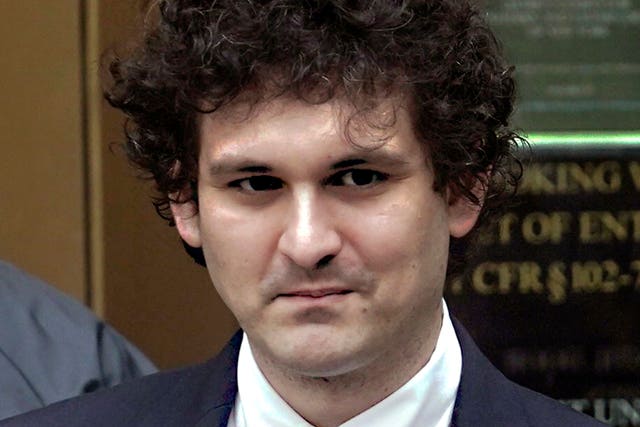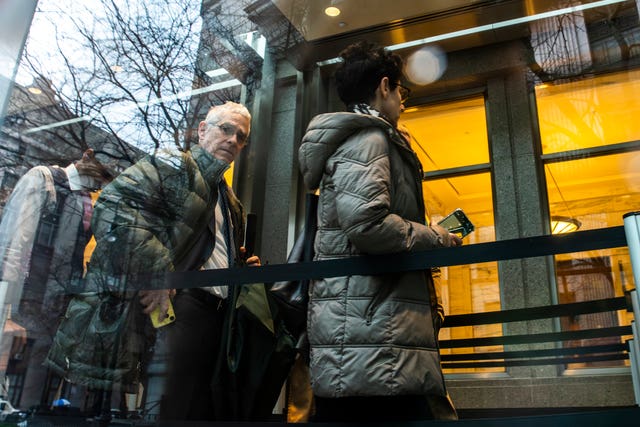
Crypto entrepreneur Sam Bankman-Fried was sentenced to 25 years in prison on Thursday for a billion-dollar fraud that unravelled with the collapse of FTX, once one of the world’s most popular platforms for exchanging digital currency.
Bankman-Fried, 32, was convicted in November of fraud and conspiracy – a dramatic fall from a year earlier when he and his companies seemed to be riding a crest of success that resulted in a Super Bowl advertisement and celebrity endorsements from stars like Tom Brady and comedian Larry David.

US District Judge Lewis A Kaplan imposed the sentence in the same Manhattan courtroom where, four months ago, Bankman-Fried testified that his intention had been to revolutionise the emerging cryptocurrency market with his innovative and altruistic ideas, not to steal.
Mr Kaplan said the sentence reflected “that there is a risk that this man will be in a position to do something very bad in the future. And it’s not a trivial risk at all”.
He added that it was “for the purpose of disabling him to the extent that can appropriately be done for a significant period of time.”
Mr Kaplan further ordered Bankman-Fried to forfeit more than 11 billion (£8.7 billion).
He also said he would advise the Federal Bureau of Prisons to send him to a medium-security prison or less near the San Francisco area because he is unlikely to be a physical threat to other inmates or prison staff, and his autism and social awkwardness would make him vulnerable to other inmates in a high-security location.
Prosecutors had recommended a prison sentence of 40 to 50 years.
They said: “The defendant victimised tens of thousands of people and companies, across several continents, over a period of multiple years.
“He stole money from customers who entrusted it to him, he lied to investors, he sent fabricated documents to lenders, he pumped millions of dollars in illegal donations into our political system and he bribed foreign officials.
“Each of these crimes is worthy of a lengthy sentence.”
Mr Kaplan agreed with prosecutors that Bankman-Fried should not get leniency just because some investors and customers might get some of their lost money back.
He called the argument “logically flawed” and “speculative”.
He said customers lost about 8 billion dollars (£6.3 billion), investors lost 1.7 billion dollars (£1.3 billion) and lenders were shorted by 1.3 billion dollars (£1.02 billion).
Mr Kaplan also cited three instances where he concluded that Bankman-Fried committed perjury during his trial testimony.
Given a chance to speak, Bankman-Fried stood and apologised.

He said: “A lot of people feel really let down. And they were very let down. And I’m sorry about that. I’m sorry about what happened at every stage.”
Defence lawyer Marc Mukasey said his client was misunderstood.
Mr Mukasey said: “Sam was not a ruthless financial serial killer who set out every morning to hurt people.
“Sam Bankman-Fried doesn’t make decisions with malice in his heart. He makes decisions with math in his head.”
Bankman-Fried’s attorneys, friends and family have urged leniency, saying he is unlikely to reoffend again.
They also say FTX’s investors have largely recovered their funds – a claim disputed by bankruptcy lawyers, FTX and its creditors.
“Mr Bankman-Fried continues to live a life of delusion,” wrote John Ray, the chief executive of FTX who has been cleaning up the bankrupt company.
“The business he left on November 11 2022 was neither solvent nor safe.”
Two weeks ago, Bankman-Fried’s lawyer Marc Mukasey attacked a probation office recommendation of 100 years in prison, saying a sentence of that length would be “grotesque” and “barbaric”.
“Sam is not the evil genius depicted in the media or the greedy villain described at trial,” Mr Mukasey said, calling his client a “first-time, non-violent offender”.
Bankman-Fried was worth billions of dollars on paper as the co-founder and chief executive of FTX, which was the second-largest cryptocurrency exchange in the world at one time.

FTX allowed investors to buy dozens of virtual currencies, from Bitcoin to more obscure ones like Shiba Inu Coin.
Flush with billions of dollars of investors’ cash, Bankman-Fried took out a Super Bowl advertisement to promote his business and bought the naming rights to an arena in Miami.
But the collapse of cryptocurrency prices in 2022 took its toll on FTX, and ultimately led to its downfall.
FTX’s hedge fund affiliate, known as Alameda Research, had bought billions of dollars of various crypto investments that lost considerable amounts of value in 2022.
Bankman-Fried tried to plug the holes in Alameda’s balance sheet with FTX customer funds.

Three other people from Bankman-Fried’s inner circle pleaded guilty to related crimes and testified at his trial.
The biggest name among the three was Caroline Ellison, once the girlfriend of Bankman-Fried.
Ellison described Bankman-Fried as a calculating individual who knew that he was likely committing crimes when he directed the use of customer funds.
Two other one-time friends of Bankman-Fried: Gary Wang and Nishad Singh; also testified they felt they were directed by Bankman-Fried to commit fraud.

Enjoy the convenience of having The Sunday Post delivered as a digital ePaper straight to your smartphone, tablet or computer.
Subscribe for only £5.49 a month and enjoy all the benefits of the printed paper as a digital replica.
Subscribe